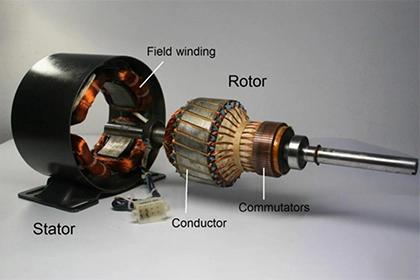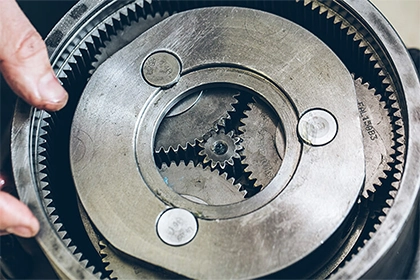
How a 3 phase induction motor works?
To actually achieve torque at the motor shaft, a current is applied across the stator. This creates a rotating magnetic field which in turn induces a current in the rotor. Because of this induced current, the rotor also creates a magnetic field and starts to follow the stator due to magnetic attraction.
A three-phase induction motor is a type of electric motor that uses electromagnetic induction to convert electrical energy into mechanical energy. It is a type of brushless motor, which means that it does not use brushes or commutators, which are components that are used in other types of electric motors to transfer electrical energy to the rotor.
The basic operating principle of a three-phase induction motor is the same as that of other induction motors. The stator, which is a stationary component that consists of a series of copper or aluminum coils, is mounted on the outer shell of the motor and connected to the electrical power supply. When an electrical current flows through the stator coils, it creates a magnetic field that extends into the rotor, which is a moving component that is mounted on the motor's shaft.
The rotor is typically made up of a series of conductive bars that are connected to a series of short-circuited end rings. When the rotor is placed in the magnetic field produced by the stator, it experiences a force known as the "rotor reaction," which causes it to rotate. This rotational motion is transferred to the motor's shaft, which can then be used to drive a load.
The key difference between a three-phase induction motors and other types of induction motors is the way in which the stator's magnetic field is generated. In a three-phase induction motor, the stator is divided into three separate sections, each of which is connected to a separate phase of the electrical power supply. This allows the stator to generate a rotating magnetic field that is more efficient and powerful than the magnetic field generated by a single-phase induction motor.
The rotating magnetic field produced by the stator is what drives the rotor to rotate. As the rotor rotates, it generates its own magnetic field, which interacts with the stator's magnetic field to produce a force that causes the rotor to rotate. This interaction between the stator's magnetic field and the rotor's magnetic field is known as electromagnetic induction, and it is the fundamental principle upon which the three-phase induction motor operates.
One of the key advantages of a three-phase induction motor is its high efficiency and power density. Because the stator's magnetic field is generated using three separate phases, it is able to produce more torque and power than a single-phase induction motor of the same size. This makes three-phase induction motors well-suited for use in high-power applications, such as driving large pumps, fans, and conveyor belts, as well as powering industrial machinery and electric vehicles.
In addition to their high efficiency and power density, three-phase induction motors are also known for their reliability and durability. Because they do not use brushes or commutators, they are less susceptible to wear and failure over time compared to other types of electric motors. This makes them well-suited for use in applications where long-term reliability is a critical concern.
Overall, a three-phase induction motor is a type of electric motor that uses electromagnetic induction to convert electrical energy into mechanical energy. Its ability to generate a rotating magnetic field using three separate phases makes it more efficient and powerful than other types of induction motors, which makes it well-suited for use in high-power applications. Its brushless design also makes it more reliable and longer-lasting compared to other types of electric motors.



Leave a Comment